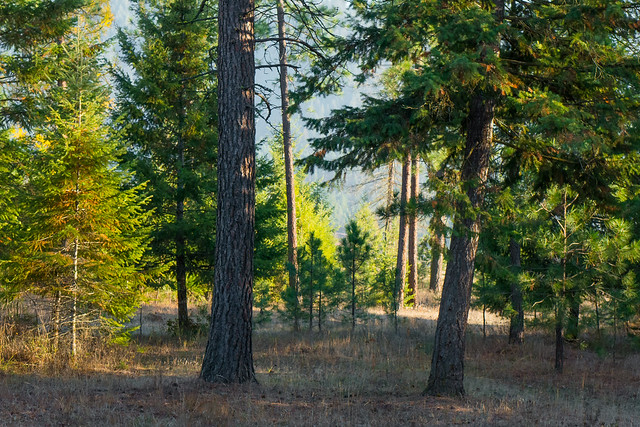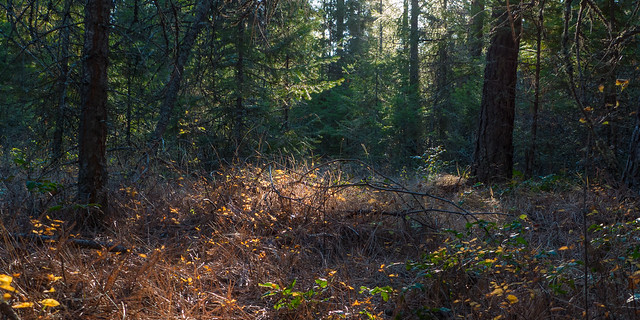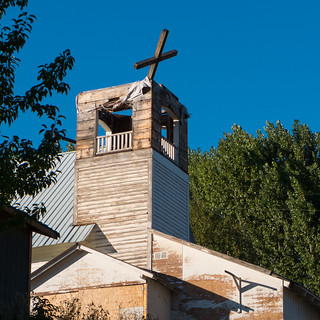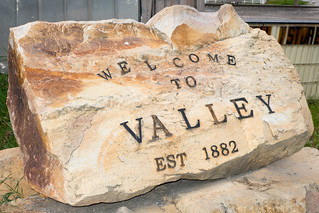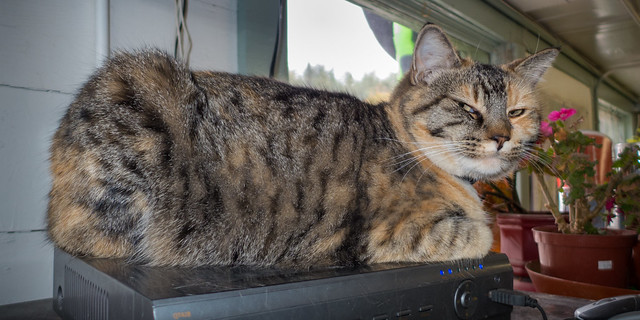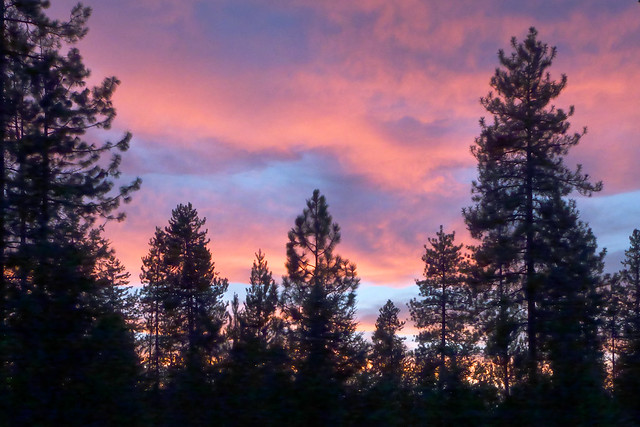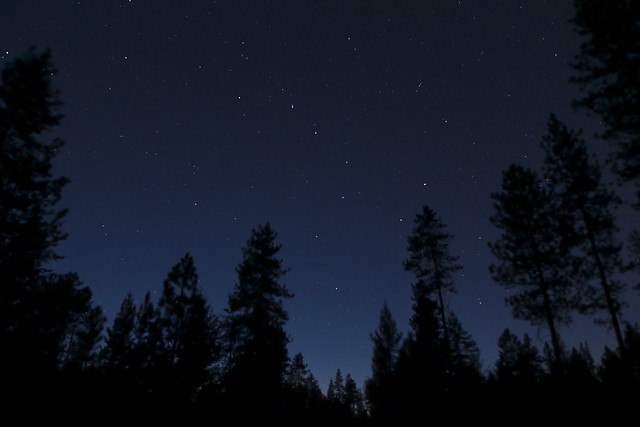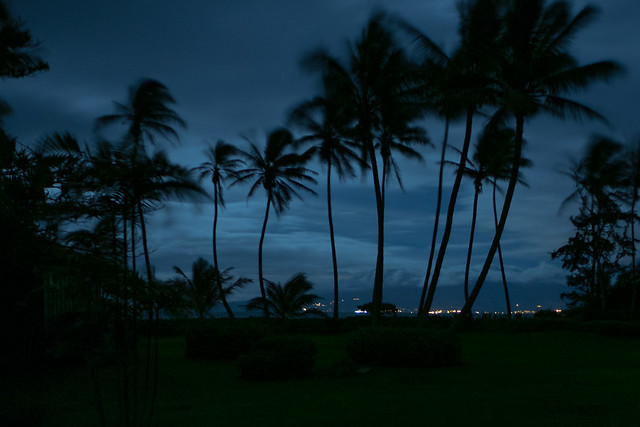A preacher from my old church apparently has claimed to be comforted rather than just annoyed at seeing criticism from the outside world.1 From what I’ve heard, he views the impious writing that’s being done by a handful of unbelieving critics as evidence of the critical writers’ own angst about their impending damnation. He seems not to have considered the alternative possibility–that we might have some actual grounds for criticism.2
Having our thoughts and motives invented for us is nothing new for those outside the walls of Zion, of course. My book An Examination of the Pearl shows some of that under the subheading “Caricature and Blame.” But the preacher is not just imagining that many of his former brethren suffer from a lingering fear of hell. It is his church’s doctrines that put it there.
It Pays to (Pretend to) Believe
For the most part, and to their credit, Conservative Laestadian preachers now dwell very little on eternal fear-mongering in their sermons. A 2013 one in Seattle, 3 for example, is full of love and grace and even respect, worlds apart from Laestadius’s crude shouting about judgment and damnation.
But the much-lauded diversity of gifts still includes those who remind the flock about the dire consequences of moving outside the tiny bubble where that love and grace are offered. In his November 29, 2013 sermon, 4 a Rockford, Minnesota preacher, after reflecting on how fortunate he and his listeners are as Children of God “amongst the millions of people in this world,” explains everyone else’s unhappy fate:
Even in a temporal sense, we can understand what the pain might feel like of the fires of hell. If you’ve ever burnt the tip of your finger lighting a candle or something, you know how bad that hurts. Imagine living in eternity in that kind of pain and agony, like the Bible describes, “wailing and gnashing of teeth.” So, it pays to believe, dear brothers and sisters. [23:00-24:32]
Christianity keeps its followers moving along the narrow way with the carrot of heaven dangling ahead and the stick of hell behind, and the latter is surely the more powerful motivator. I know this first-hand, having suffered the “mental anguish of being unable to avoid questioning a doctrinal system that demands firm confession of belief, on pain of eternal damnation.”
That was indeed a significant part of why I devoted a year of full-time work to researching and writing An Examination of the Pearl. In some sense, examining “this pearl of Conservative Laestadianism was in some sense to cherish and value it.” I was still clinging to the faith, after all. “But I also had a very personal need to confront it, to stare down its threats and dismantle—to my own satisfaction at least—its most outrageous claims” (Epilogue).
I asked Dr. Valerie Tarico, writer of a fine book about leaving fundamentalism and a psychologist who has written extensively about its emotional abuses, about the power of fear over believers and doubters. (Check out her blog at awaypoint.wordpress.com.) She says, “The concepts of heaven and hell tap emotions that are so deep and primal it can be virtually impossible for a doubting believer to rationally assess Christianity’s truth claims.”
It’s not just a metaphor to say questioning your faith is painful. Fear, Dr. Tarico says,
is like pain in that when we are intensely afraid we can’t focus on anything else. Also, like pain, we learn to avoid it whenever we can. Someone who has felt a panic attack or a phobia triggered by anything from dogs to dust may restructure basic life routines to avoid the feeling. They may rationalize the changes—this route to work is more convenient; I just like being at home; clean surfaces are more sanitary. As long as they don’t confront the fear, they can live in the illusion that it isn’t there keeping them bound in place. But when the line is crossed, the fear can become debilitating.
Many readers of this blog have crossed that line or are anxiously weaving back and forth across it. I’ve been there. I know what it’s like. There’s just no way you can stand even the possibility of being wrong with so much–infinite, unending torment!–at stake. Dr. Tarico compares this fearful state in which many Christians are trapped to the physical confinement of an agoraphobic:
As long as they stay within the walls of faith, they feel fine. But when they try to put a toe out they start feeling uncomfortable, and if they should find themselves, even momentarily, looking at faith from the outside, heart-pounding, gut-wrenching panic sends them scurrying back inside.

Thankfully, with time and a lot of hard work, I have been able to completely neutralize the primal fear of hell. The ancient, primitive fight-or-flight mechanism working in the basement of the brain is what produces butterflies in the stomach, those anxious “what if?” questions whispered in the darkness of sleepless nights. It reacts quickly to threats and disregards them slowly, for good reason: Those ancestors who paid attention to things that might have caused them harm, even to the point of overreacting, are the ones who went on to reproduce and ultimately produce you.
What got immortalized in our genes, Dr. Robert M. Price and I write in our book on evolution and Christianity, is the tendency to play it safe, to make the best bet for survival and reproduction. “You had some prehistoric ancestor, one of many, who was prone to hear rustling in the tall grass and run for her life. When it turned out not to be a false alarm one afternoon, she survived to conceive the next branch on the family tree that night. Her jaded, skeptical cousin did not.” 5
Even after my more evolved cerebral cortex had examined and found utterly baseless the doctrines of my church, including the threats of eternal damnation made by it and most of the rest of Christianity, it took a while for the rest of my brain to catch up. But I was confident that it would, eventually, and it has.
Some Hellish History
All the bowing and scraping of fear-based devotion is no different, really, than paying tribute or swearing allegiance to the mob to avoid losing kneecaps or even your life. It turns out that Hell is a product of the same part of the world that brought us the subject matter of the Godfather movies and The Sopranos–Sicily. A fiery underworld is a real phenomenon, there and elsewhere. I’ve seen a version of the lake of fire myself, in Hawaii. I watched its glowing smoke roiling into the night and imagined how easily such a sight could have inspired awe and dread in ancient minds full of angry gods.
The regions around Israel are as devoid of volcanic activity as the pages of the Old Testament are of any mention of eternal fires. Indeed, when the Hebrew Bible does indicate the existence of some kind of afterlife, in the midst of many passages that explicitly deny such a thing, it sends everybody there, good and evil alike.6 That follows the lead of the Mesopotamian epics on which some of our oldest Bible writings are based: “The dead spirits in these early stories lead a grim, bleak, dry, and completely egalitarian existence. There is no division yet into privileged or blessed souls versus sinners or common folk.” 7
Zoroastrianism may have had an early influence on the idea of a tormenting afterlife, as well as the concept of a miraculously conceived savior (Soshyans) forgiving penitent sinners and reconciling them to God.8 Ancient Egyptian mythology seems to have included fiery hazards for the wicked, too, “horrendous sudden perils, if not exactly punishments.” 9 But the ancients who really sparked the flames of Hell were the Greeks. Inspired by the volcanoes and fumaroles of nearby Sicily, they invented Tartarus as a place of torment for the wicked many centuries before the New Testament started being written.10
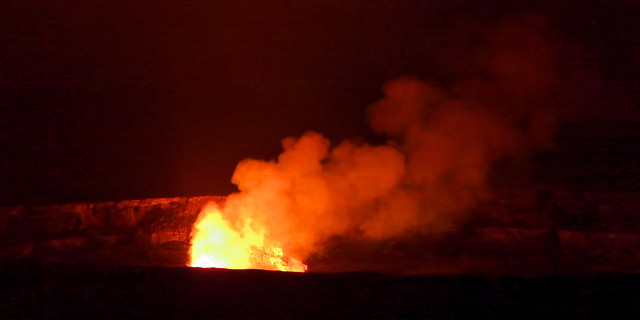
Paul said nothing of the topic. For him, the wages of sin were death and the punishment was missing out on everlasting life. The first Gospel writer, decades later, was Mark, whose very spare account of Jesus only has him mentioning “eternal damnation” for blaspheming the Spirit and advocating self-mutilation to avoid being cast into the unending fires of Gehenna.11 It would take Matthew, still later, for Jesus and then Christianity to start warning about some Sicilian mafia hit for those who get on the wrong side of the Heavenly Godfather.
An indefensibly vicious addition to the idea is of the post-mortem punishment being eternal, with no hope of repentance or rehabilitation. That was slow to catch on. Not everyone who was cast into Tartarus was destined to remain there forever, only those “who appear to be incurable by reason of the greatness of their crimes.” 12 Plutarch’s version of things centuries later had “souls undergoing ‘correction,’ by being hammered and pummeled brutally to get them ‘in shape’ for being sent back to another life.” 13
Even early Christianity had some relatively humanitarian voices speaking about rehabilitation, before the grotesque cruelty of eternal, unremitting torment finally took hold. Origen [c. 185–c. 254] proposed that the soul could move up or down in status depending on its behavior in the hereafter. “Eventually, Origen proposed, everyone would choose to repent, even the Devil. If Christ died for all, that would include the angels: the Devil was once an angel. If God is infinite, everything will naturally return at the end of time to be part of him...” 14
A Mighty Monster is our God
Fundamentalists like to point out how they “tell it like it is,” or “preach sin as sin.” By preaching against such modern-day evils as gay marriage and movie-watching without any beating around the (burning) bush, they illustrate their piety and spiritual backbone. Perhaps, then, they will pardon my own effort to point out what I believe to be the single worst case of evil imaginable, fictional though it is: the idea of an all-powerful God sending a human being to an eternity of screaming torment, pain without end.
God created uncounted billions of human beings with the full knowledge that he was going to damn most of them—or almost all of them, if you subscribe to the extreme exclusivity of Laestadianism, the Churches of Christ, Iglesia ni Cristo, and numerous other sects. It’s like breeding puppies for the sole purpose of slowly torturing them, and making yourself feel better about it by sparing the one or two that manage to find a well-hidden squeak toy. And why? To save face in a grudge match with the enemy of the soul, whom an omnipotent God could just squash underfoot like any other opponent if he really wanted to.
Please stop and ponder this for a moment: What possible justification could there be for blaming those who are innocently ignorant for never even hearing about the only possible way to be saved? And the consequence to them is an eternity of unimaginably horrible torture? It’s not even punishment. There is no opportunity for rehabilitation, ever. It’s not about deterrence, either, because almost all of those being tortured had no idea that such a fate was in store for them, much less how to avoid it. No, it is just the most unimaginably cruel and pointless sadism, from a God we are told is loving and gracious.15
To emphasize what a monster Christianity has turned its God into with this disgusting doctrine of eternal torment, I’m going to end this post in an unlikely way: with a dog story. We have a country dog who stands watch outside the house and barks enthusiastically (sometimes a little too much so) to let her people know when some animal is roaming around. Whether we like it or not, she often drags some piece of dead wildlife home to gnaw on. No store-bought rawhide chew toys are needed around here.

She got a piece of bone stuck crossways in her mouth this summer. The free country life is one of the best a dog could ask for, but this is indeed a hazard of it. Fortunately, it didn’t take us long to notice that something was amiss. I held the dog down while my wife extracted the bone with a pair of pliers. Neither of us could stand the sight of her suffering, and didn’t want her to remain in that painful, fearful state for a moment longer than necessary.
Now, this is a dog, a soulless animal. It is far from the exalted place in which Christianity places humanity, the supposed crown of God’s creation. And yet that God treats this dog, and every other non-human animal, far more compassionately than he does his prize creation. After death, this dog’s consciousness will simply cease to exist.
What would you think of my wife and me if we had simply watched, indifferent, while this poor animal shook its head and gaped in terror at the painful obstruction lodged in its mouth? What if we were so awful as to deliberately stick the bone in there? How about if we kept the dog alive with a liquid diet just so that its torment could be prolonged, day after painful day? You, a mere human with sin-fallen, imperfect moral values, recoil in disgust at the thought.
Yet this is nothing in comparison to the horrors that the perfect God of (most) Christianity has in store for most of the humanity he supposedly prizes over all other creatures. This is not an entity that can be sincerely loved, only a bullying strongman to be feared.
The Rockford preacher talked about his reservations about sending his children to an all-day event at the local school, “an anti-bully program.” Nothing wrong with the premise, he said–he doesn’t want his children to be on either end of bullying. But, alas, it was “the music and the atmosphere at times through the day that was very offensive, especially to a Child of God” (6:30-7:30). Perhaps he should have attended himself, earplugs at the ready to block out dangerous “music of this world,” so that he could learn a thing or two about bullying. There’s been quite a bit of it from pulpits like his.
Notes
-
This blog posting originally said, “My old church has taken to editing a few of the recordings of its sermons before putting them on its website. In the censored portion of one sermon whose public version ends prematurely, I’ve heard that the preacher claimed some comfort in seeing writings from the church’s worldly critics.” I did notice a couple of cases where such editing seemed to have occurred. But I have edited the posting to avoid distracting from its main focus–the vicious evil of eternal torment and any deity that would threaten it. ↩
-
Questioning the motives of people who dare to assert dissenting viewpoints is a losing and hypocritical game for fundamentalists, Laestadians included. There are just too many supposed spiritual fathers for whom that particular shoe fits all too well. Catholics could easily view Luther’s voluminous tirades against the Pope as motivated by some repressed awareness that Rome was right all along. And how about Laestadius–did his visions and righteous indignation arise from some fearful subconscious knowledge that those he mocked as “proper Lutherans” really were the proper ones, after all? Perhaps Paul was haunted by how much he had turned his back on pharisaic Judaism, and penned a bunch of wishful thinking about grace and faith to the Romans as a result. ↩
-
archive.laestadianlutheran.org/sermons/z_Older_Archives/Seattle/Seattle_2013/101313_tomms.mp3 ↩
-
archive.laestadianlutheran.org/sermons/z_Older_Archives/Minneapolis/Minneapolis_2013/112913_NMuhonen.mp3 ↩
-
Price, Robert M. and Edwin A. Suominen, Evolving out of Eden: Christian Responses to Evolution. Tellectual Press (2013), p. 200. ↩
-
The God who was constantly making threats of bodily harm against his chosen people and fussing about endless details of their behavior declined to offer a single warning about any eternal punishment until late in the Old Testament, leaving ambiguity about the subject even into the New Testament. He allowed it to appear that there really is no hell at all, not even really an afterlife, with several different parts of the Bible describing the end of human existence in the grave, of good and evil all going to the same place. Thesis #88, Check out these references to the free online version of my first book, An Examination of the Pearl: 4.8.3, 6.8, 6.9, 6.10, 6.17, 6.18, 6.18, 6.19, 6.20, 6.21, 6.25, 6.28, 6.33. ↩
-
Turner, Alice K. The History of Hell. Harcourt Brace & Co (1993), p. 11. ↩
-
Turner at pp. 16-18. ↩
-
Turner at p. 13. ↩
-
Price, Robert M. The Bible Geek podcast, August 5 episode, 1:00:50-1:17:30; Turner at p. 30-33. ↩
-
It’s debatable whether Mark’s Jesus is referring to eternal punishment with his warnings about Gehenna. According to Wikipedia, the word means “the ‘Valley of Hinnon,’ which was a garbage dump outside of Jerusalem. It was a place where people burned their garbage and thus there was always a fire burning there. Bodies of those deemed to have died in sin without hope of salvation (such as people who committed suicide) were thrown there to be destroyed.” For a different view, see The Fires of Gehenna: Views of Scholars by Todd Bolen. ↩
-
Phaedo, as quoted in Turner, p. 32. ↩
-
Turner at p. 39. ↩
-
Turner at p. 77. ↩
-
These two paragraphs are adapted from An Examination of the Pearl, §4.9.2, “Soteriology.” ↩






